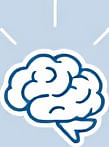Reducing Cognitive Load with Team Collaboration Tools
 by Max Miller
by Max Miller
Explore how team collaboration tools can ease mental overload by organizing tasks and fostering efficient teamwork. This article offers practical strategies for students and professionals to enhance focus and productivity through simple digital aids.

In our daily routines, managing multiple tasks can lead to overwhelming mental pressure. Cognitive load refers to the amount of working memory used for information processing. Team collaboration tools offer a way to share this burden. By distributing responsibilities, these tools help individuals focus on key priorities.
One effective approach is using shared platforms for task management. For instance, applications like Trello or Asana allow users to create lists and assign items to team members. This method ensures that no single person holds all the details. Cognitive load offloading becomes easier when tasks are visible and accessible to everyone involved.
Another strategy involves real-time communication apps such as Slack or Microsoft Teams. These tools enable quick exchanges of ideas without the need for lengthy emails. By keeping conversations organized in channels, users can reduce the mental effort required to track discussions. Professionals often find that this setup improves overall efficiency.
To implement these tools effectively, start with setting clear guidelines. Begin by identifying common pain points, such as forgotten deadlines or miscommunications. Once identified, integrate a tool that fits your team's needs. For example, in a student group project, using a shared document can centralize notes and reduce individual note-taking.
Practical Tips for Everyday Use
Here are some actionable steps to get started:
- Choose the right tool: Select based on your requirements. A simple app for small teams might suffice, while larger groups may need more features.
- Organize information: Use folders and labels to categorize content. This practice helps in quickly retrieving data and minimizes searching time.
- Set reminders and notifications: Configure alerts for important updates. This way, you avoid constantly checking for new information, freeing up mental space.
- Encourage team input: Involve others in managing shared resources. When everyone contributes, the cognitive burden is spread evenly.
- Review and adjust regularly: Periodically assess how the tools are working. Make changes as needed to maintain effectiveness.
In professional settings, these tools can transform workflow. For example, a marketing team might use collaborative software to track campaign progress. By offloading data entry and updates to the system, team members can concentrate on creative aspects. Productivity enhancement follows naturally from this division of labor.
For students juggling classes and assignments, the benefits are equally significant. Imagine using a shared calendar to coordinate study sessions. This approach prevents overlap and reduces the stress of scheduling. Over time, such habits build better habits for handling academic demands.
Beyond tools, combining them with personal strategies can amplify results. For instance, breaking down complex projects into smaller steps within a collaboration platform makes them less intimidating. This technique aligns with principles of cognitive science by simplifying information processing.
Challenges may arise, such as tool overload if too many are used at once. To counter this, focus on one or two options initially. Test them in low-stakes situations before full adoption. The goal is to create a supportive environment that promotes clear thinking.
In conclusion, incorporating team collaboration tools into daily life provides a straightforward path to managing cognitive demands. Whether in work or study, these resources foster a balanced approach to productivity. By applying the tips outlined, individuals can experience improved focus and reduced mental fatigue, leading to more fulfilling routines.
